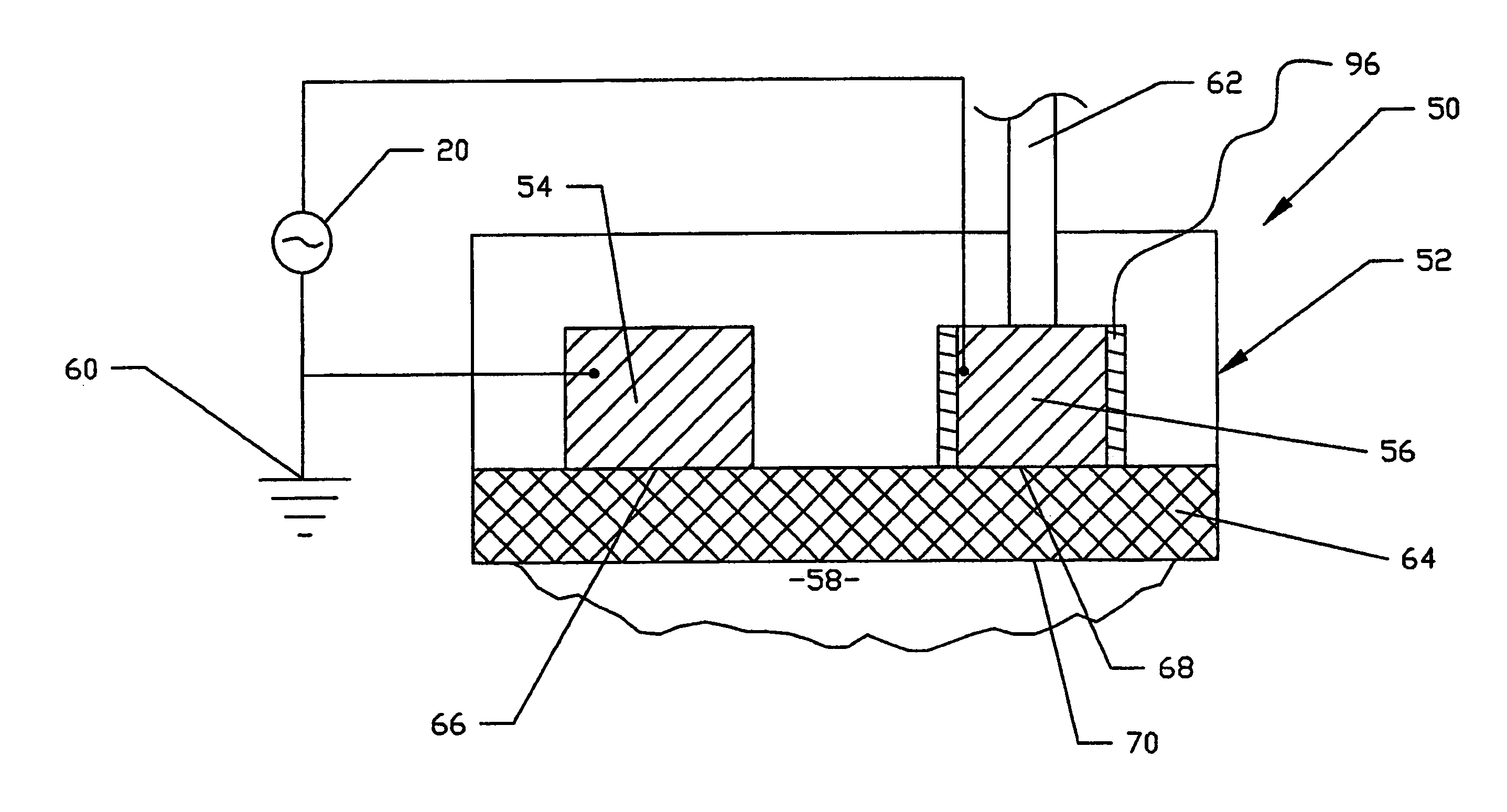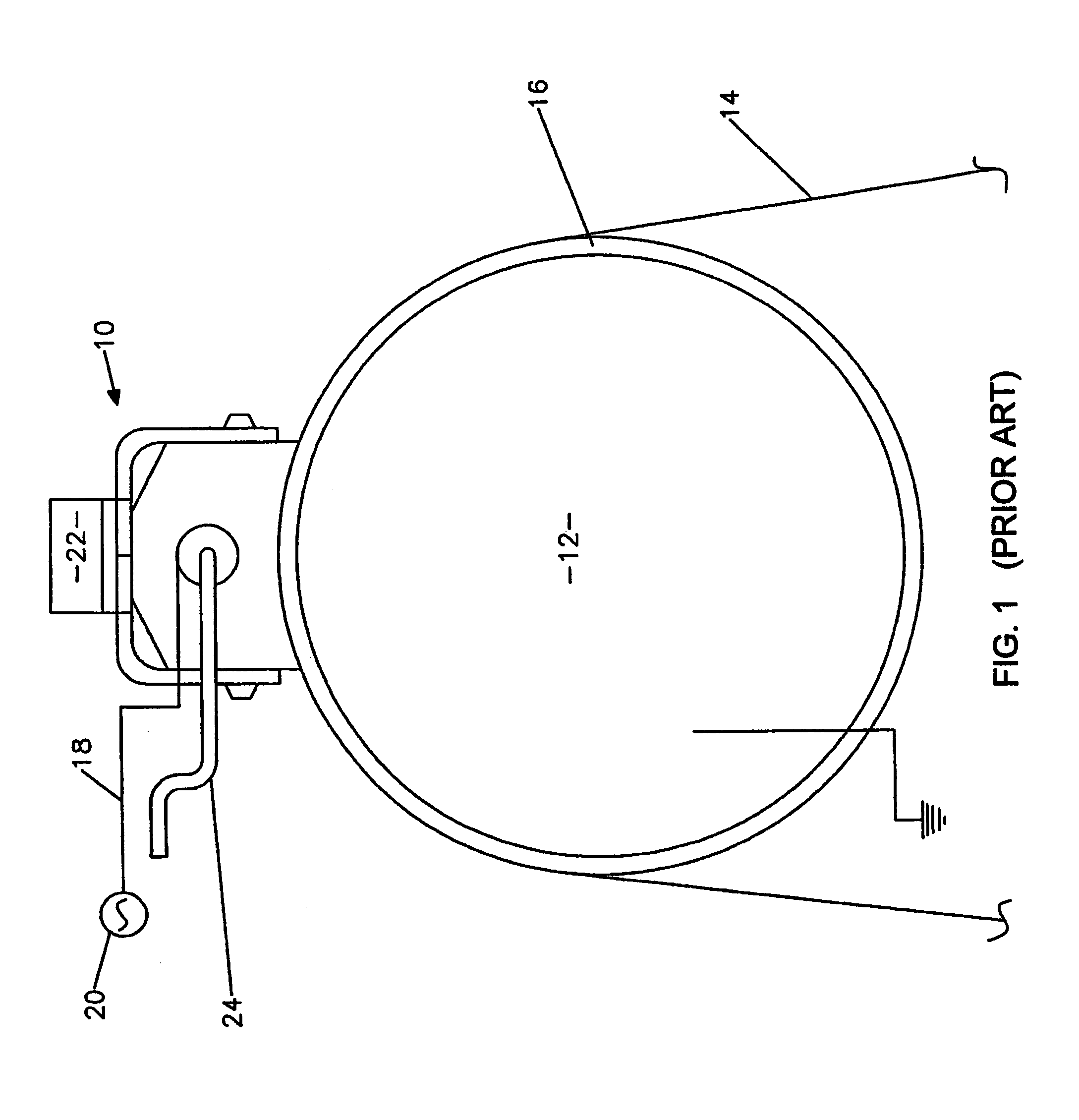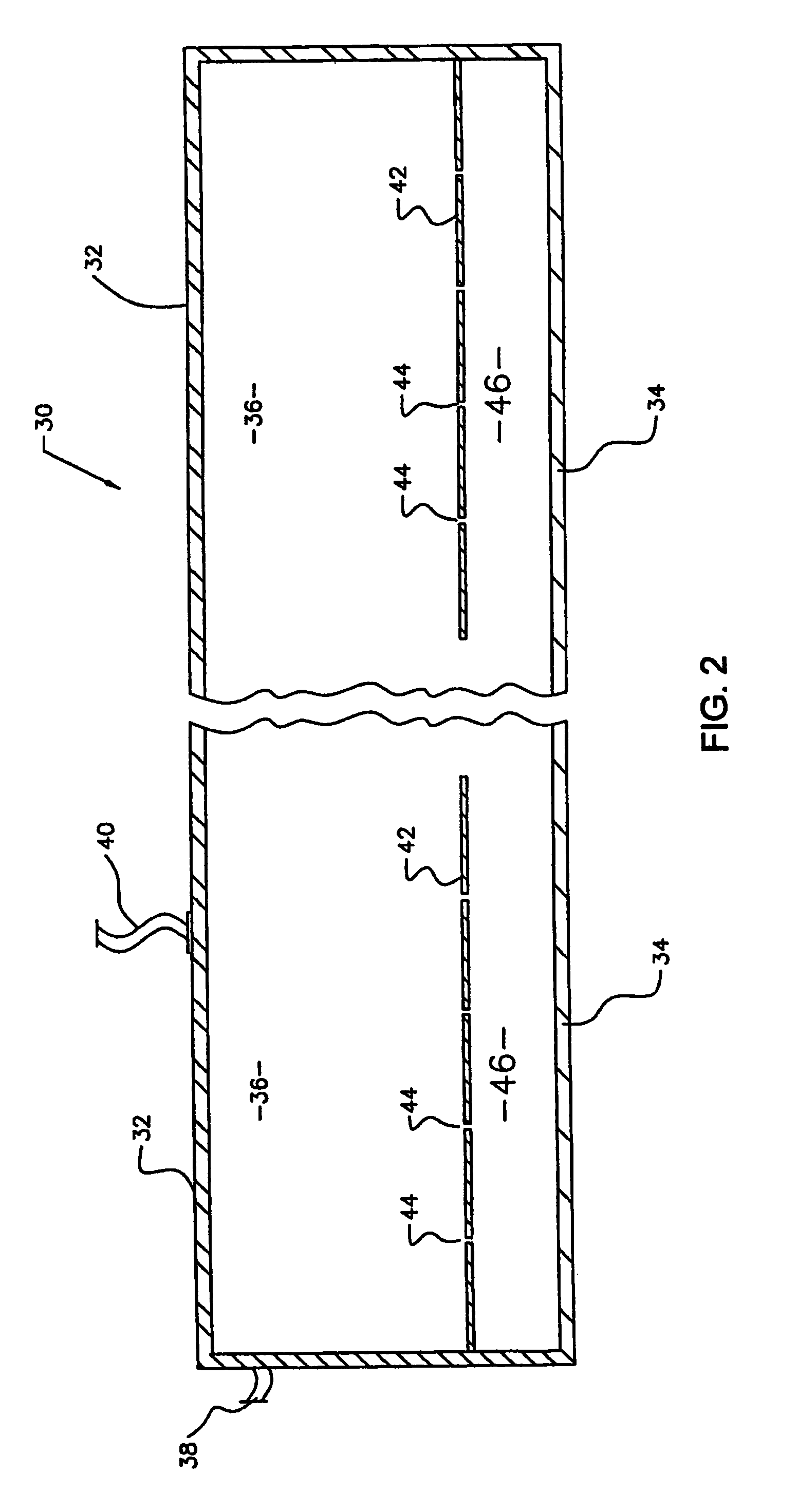Atmospheric glow discharge with concurrent coating deposition
a technology of atmospheric glow and coating deposition, applied in the field of barrier films, can solve the problems of increasing operating and maintenance costs, and achieve the effects of enhancing curing, smoothing, and enhancing curing
- Summary
- Abstract
- Description
- Claims
- Application Information
AI Technical Summary
Benefits of technology
Problems solved by technology
Method used
Image
Examples
example 1
Plasma Pre-Treatment; UV-Light Curing; Plasma Post-Treatment
[0040]Substrate material: PET film[0041]Drum Speed: 200 ft / min[0042]Pre-treatment:[0043]Plasma gas: helium fed at 2000 sccm[0044]AC-voltage frequency: 20 KHz[0045]Deposition:[0046]Precursor: liquid fluoroacrylate monomer (with 5% Irgacure-184 photoinitiator)[0047]Evaporator temperature: 200–250° C.[0048]Mixing step: mixed with plasma gas prior to injection[0049]Feed rate of vaporized precursor: 200 sccm[0050]Plasma gas: helium fed at 2000 sccm[0051]AC-voltage frequency: 20 KHz[0052]Curing:[0053]Low Pressure Mercury UV Lamp at 300 Watt / inch[0054]Post-Treatment:[0055]Plasma gas: helium with 5% acetylene fed at 100 sccm[0056]AC-voltage frequency: 15 KHz.
[0057]The resulting coated product exhibited hydrophobic and oleophobic properties with excellent adhesion to the substrate. Similar results were obtained when polypropylene, polyethylene, polycarbonate, polyamide, polyimide and cellulose derivative films were treated / coated ac...
example 2
Plasma Pre-Treatment; UV-Light Curing; Plasma Post-Treatment
[0058]Substrate material: PET film[0059]Drum Speed: 200 ft / min[0060]Pre-treatment:[0061]Plasma gas: helium with 10% oxygen fed at 3000 sccm[0062]AC-voltage frequency: 20 KHz[0063]Deposition:[0064]Precursor: liquid fluoroacrylate monomer (with 5% Irgacure-184 photoinitiator)[0065]Evaporator temperature: 200–250° C.[0066]Mixing step: mixed with plasma gas prior to injection[0067]Feed rate of vaporized precursor: 100 sccm[0068]Plasma gas: helium fed at 3000 sccm[0069]AC-voltage frequency: 20 KHz[0070]Curing:[0071]Low Pressure Mercury UV Lamp at 300 Watt / inch[0072]Post-Treatment:[0073]Plasma gas: helium with 5% acetylene fed at 100 sccm[0074]AC-voltage frequency: 15 KHz
[0075]The resulting coated product exhibited hydrophobic and oleophobic properties with excellent adhesion to the substrate.
example 3
Plasma Pre-Treatment; UV-Light Curing; Plasma Post-Treatment
[0076]Substrate material: PET film[0077]Drum Speed: 200 ft / min[0078]Pre-treatment:[0079]Plasma gas: helium fed at 2000 sccm[0080]AC-voltage frequency: 20 KHz[0081]Deposition:[0082]Precursor: liquid polyethyleneglycol monoacrylate (with 5% Irgacure-184 photoinitiator)[0083]Evaporator temperature: 200–250° C.[0084]Mixing step: mixed with plasma gas prior to injection[0085]Feed rate of vaporized precursor: 200 sccm[0086]Plasma gas: helium fed at 2000 sccm[0087]AC-voltage frequency: 20 KHz[0088]Curing:[0089]Low Pressure Mercury UV Lamp at 300 Watt / inch[0090]Post-Treatment:[0091]Plasma gas: helium with 5% acetylene fed at 3000 sccm[0092]AC-voltage frequency: 15 KHz
[0093]The resulting coated product exhibited hydrophilic and anti-fog properties with excellent adhesion to the substrate. Similar results were obtained when polypropylene, polyethylene, polycarbonate, polyamide, polyimide and cellulose derivative films were treated / co...
PUM
| Property | Measurement | Unit |
|---|---|---|
| frequencies | aaaaa | aaaaa |
| speeds | aaaaa | aaaaa |
| frequency | aaaaa | aaaaa |
Abstract
Description
Claims
Application Information
 Login to View More
Login to View More - R&D
- Intellectual Property
- Life Sciences
- Materials
- Tech Scout
- Unparalleled Data Quality
- Higher Quality Content
- 60% Fewer Hallucinations
Browse by: Latest US Patents, China's latest patents, Technical Efficacy Thesaurus, Application Domain, Technology Topic, Popular Technical Reports.
© 2025 PatSnap. All rights reserved.Legal|Privacy policy|Modern Slavery Act Transparency Statement|Sitemap|About US| Contact US: help@patsnap.com



